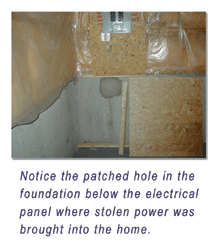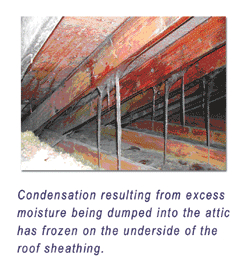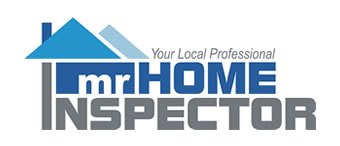Signs & Risks of Grow Houses (Provided By Carson Dunlop)
Have you ever wondered why your neighbors never surface from their home, rarely have any garbage to pick up, always have the blinds down or windows covered, come and go at unusual hours and never invite you over for a barbecue? If this is the case, there is a possibility you are living beside a grow house. With an estimated 50,000 grow houses in Canada, there is growing concern about health, fire, safety, and structural implications for home buyers. But what risk is there in owning a grow home?
What is a grow house?
A grow house is a home that has been converted into a marijuana operation. Larger homes in quiet areas with unfinished basements are preferred, although grow houses can exist in any neighborhood.
What are the signs and the risks?
 There must be ideal greenhouse conditions for these operations. The electrical system is usually altered to power the hydroponic equipment. Operators may also steal electricity by tapping into the electrical service before it enters the electrical meter, and bring power into the house through a hole in the foundation. Additional circuitry is usually added inside the home to bring electrical power to the equipment, and operators rarely make sure that these alterations meet electrical codes. While these modifications can create a hazardous electrical situation, improvements can be made to ensure the electrical system remains safe for a potential homebuyer. Holes cut in the foundation wall can be repaired as well, but if not done properly, the potential for water leakage remains.
There must be ideal greenhouse conditions for these operations. The electrical system is usually altered to power the hydroponic equipment. Operators may also steal electricity by tapping into the electrical service before it enters the electrical meter, and bring power into the house through a hole in the foundation. Additional circuitry is usually added inside the home to bring electrical power to the equipment, and operators rarely make sure that these alterations meet electrical codes. While these modifications can create a hazardous electrical situation, improvements can be made to ensure the electrical system remains safe for a potential homebuyer. Holes cut in the foundation wall can be repaired as well, but if not done properly, the potential for water leakage remains.
Plants require light, ideal temperature, water and nutrients in order to thrive, and with the heat generated by hydroponic lighting, a significant amount of humidity is produced in the process. While humans, animals, and plants need humidity, too much can cause mould, mildew, and rot to form in the home, especially in or on exterior surfaces. Often, modifications are made to the home to help vent the excess humidity to the outdoors and bring in fresh air from the outside. Fireplaces and chimneys can be used as channels for removing excess moisture. Structural members such as floor and ceiling joists are sometimes cut to accommodate additional ductwork. The structural integrity of the home may be compromised by the combination of cut framing members and high humidity. Signs of high humidity are usually most visible in attic spaces, where the moist air is often dumped. Darkening of attic surfaces is generally a good indicator that mould and mildew are present.
Mould comes in many colors and may be visible and distinct. It can also be very subtle. Surface mould may be the tip of an iceberg, with considerable mould concealed behind the wall. In other cases, the mould is only on the surface. The toughest situation occurs when the mould is not visible. Home inspectors pay particular attention to intersecting walls and ceilings where air circulation is poor or areas that have been chronically damp or wet. The good news is that many grow houses are in operation for less than a year, which may not be enough time for mould to thrive and cause serious structural damage.
Other clues
Look for painted concrete floors in the basement, and walls that have been painted white to reflect light. Screw holes and patches are often visible in the foundation wall where equipment was mounted above the floor level to avoid any water on the floor. Multiple splices in the plumbing system may be present to nourish the crop. Chemical odors, including fertilizers and pesticides are also used, which can create health hazards through poor indoor air quality.
While it is expected that realtors who are representing sellers or landlords of these properties should make every effort to ensure that all parties are notified of the potential issues, a home inspection can help quantify the severity of these issues. In most cases, with proper clean-up and some repair, these homes can be lived in without concern. Unfortunately, insurance companies are also being very cautious and focusing on reducing loss ratios, not on acquiring business, making it more difficult to get insurance on high risk homes such as grow homes. By exercising good judgment and due diligence in obtaining proper information on the condition of the home, purchasers can rest easy knowing that with a little tender loving care, the home will provide the comfort and security they deserve.














